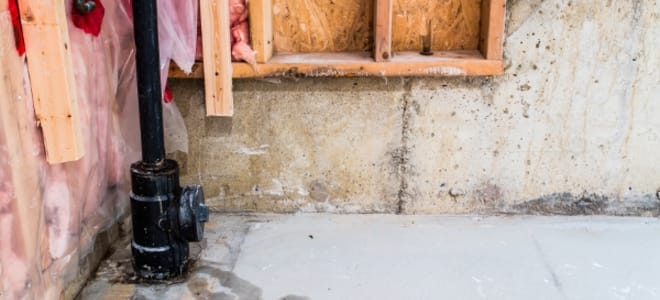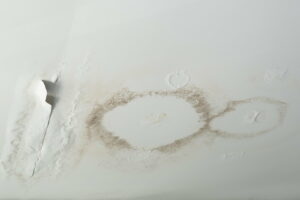They are making a few good pointers regarding Indicators of Water Damage Behind Walls in general in this content in the next paragraphs.

Water spots on walls are not pleasant to the eyes. Your house ought to be without discolorations on the wall surfaces, roofing, or floorings. That is the excellent state of a residence as well as its structures. Yet, sometimes it appears practically inevitable to experience water discolorations on walls in houses.
Homeowners living in damp areas continuously deal with the anxiety of water discolorations on walls. With all-round and also precise details on the causes of water discolorations and timely repair work procedures, you will constantly be a step in advance of such occurrences.
3 Typical Causes of Water Discolorations on Walls
As opposed to common belief, water spots on wall surfaces do not always originate from poor structure materials. There are numerous causes of water spots on walls. These include:
Wet
When hot wet air meets with completely dry cold air, it causes water droplets to base on the wall surfaces of structures. This occurs in restrooms and also cooking areas when there is heavy steam from food preparation or showers. The water beads can stain the surrounding walls in these parts of your residence and spread to various other locations.
Damp or condensation impacts the roofing and also wall surfaces of structures. This creates them to appear darker than other areas of the residence. When the wall surface is wet, it creates a suitable environment for the growth of fungi as well as microorganisms. These might have negative results on wellness, such as allergic reactions and also respiratory system conditions.
Poor Drainage
When making a building strategy, it is crucial to make certain ample water drainage. This will certainly protect against water from permeating right into the walls. Where the drain system is clogged or nonexistent, below ground dampness develops. This links to excessive wetness that you see on the wall surfaces of your structure.
The leading reason of damp walls, in this case, can be a bad drainage system. It can additionally result from bad management of sewer pipelines that run through the building.
Pipeline Leaks
A lot of homes have a network of pipes within the wall surfaces. This guarantees that the pipes are faraway from the reach of damaging rats. It always increases the stability of such pipelines, as there is little oxygen within the walls. This inhibits corrosion.
Yet, a disadvantage to this is that water leakage influences the walls of the building as well as causes prevalent damage. A telltale sign of malfunctioning pipes is the look of a water stain on the wall surface.
Pro Suggestion
A houseplant in your house likewise raises its humidity. If the residence is already damp, you might want to present houseplants with minimal transpiration. An instance of suitable houseplants is succulents.
Water Spots on Wall: Repair Service Tips
Homeowners would typically want a quick fix when managing water spots. They would quickly understand this is counterproductive as the water spots reoccur. Below are a few practical tips that will certainly guide you in the repair service of water discolorations on walls:
Verdict
Although nobody wants to have water discolorations on walls in their home, it can take place to the very best of us. This post gives you take advantage of, as you now recognize how to manage this accident if it does take place.
It is always best to hire expert solutions to assist fix the problems in your home.
Often it seems nearly inevitable to experience water spots on wall surfaces in houses.
In contrast to popular idea, water stains on wall surfaces do not constantly stem from bad structure materials. There are a number of causes of water spots on wall surfaces. The water droplets can tarnish the surrounding walls in these components of your home and also spread to other areas.
Below are a few practical tips that will lead you in the repair of water stains on wall surfaces:
CHECKING FOR WATER DAMAGE
Water damage can be costly, and it may begin before you even notice the first signs of trouble. Water damage can cause mold and mildew in your walls and floors, which can create an abundance of health concerns for your family. It can also lead to costly repairs of various appliances and general home fixtures. To avoid the pricey consequences of water damage, here are Warner Service s top 5 places you should check:
The walls The easiest place to spot the beginnings of water damage is on the walls and ceilings of your home. If water damage is present, there will most likely be water stains, especially around the windows and doorframes, and/or cracks in the drywall. If a stain looks unusual (discolored to brown, black or gray, raised texture), has a swollen appearance or is soft to the touch, contact a professional immediately. The pipes To avoid water damage, consistently check the pipes in your kitchen (especially the dishwasher and ice maker), bathrooms, laundry room (specifically washing machines) and basement for corrosion, leaks and water stains. Pay special attention to where the pipes connect in your home and the location of caulking around the bathroom fixtures, including toilets, sinks, showers and tubs. Missing or loose caulking and grout could be signs of leaking water. This seepage can also quickly cause mold and rust, so double check your water heater and tank for wet spots on the floor. The floor Water damage is very easy to spot on the floor. Look for any warping or buckling of the material, especially in the basement. If your home has wood flooring, look for bright white or dark stains. If your home has carpeting, keep it dry and clean. A damp carpet that smells of mold could cause water damage and health problems. To avoid this, consider installing floor pans under your appliances to help prevent damages from small, slow and undetected leaks. The basement and attic If your basement or attic smells odd check for mold and mildew around the area, especially the valley where the roof meets. While you are inspecting those areas, check for wall cracks, floor stains, rust and dampness in the insulation. If you live in a colder and/or rainier climate, perform routine checks for water damage from melting snow or ice and rain. The exterior Check the roof for damaged flashing and missing, cracked or curled shingles. There should also be no standing water anywhere outside your home. This could be caused by puddles, leaky rain gutters or hoses, poor drainage, or short gutter spouts. Invest in a sump pump system or water flow monitoring system, and perform routine maintenance on these outdoor appliances to avoid indoor water damage.

I found that post on How to Remove Water Stains from Walls and Ceilings while looking around the search engines. Enjoyed reading our content? Please share it. Help someone else discover it. Thank-you for your time spent reading it.
Click Here